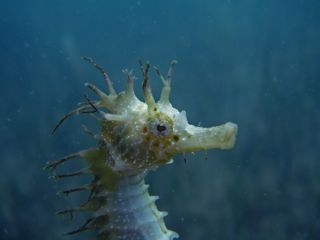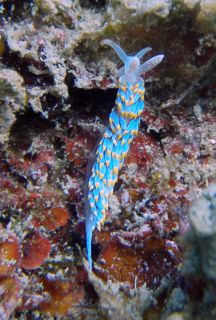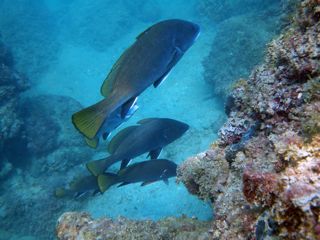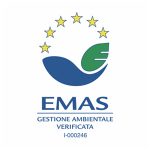The underwater environment

Diving in Miramare MPA waters is a unique experience: here visitors have the opportunity to observe a protected underwater environment characterised by a variety of habitats at high biodiversity, where a great number of species live side by side in a small area.
After the MPA establishment, this coastal and marine stretch has become a precious “world in a nutshell”, diversified in specific microhabitats associated to three distinctive areas – the tidal area, the rocky and pebble shore and seabed, and the sandy and muddy seabed – which are rich in species easy to observe at close distance during the underwater visits.
In the tidal area, it is easy to come across barnacles, bivalves, crabs, sea tomatoes and the brown algae Fucus virsoides, an interesting glacial relict – and you may even spot the renowned peacock blenny, Miramare MPA’s flagship species.
The rocky shores and seabeds are colonized by brown and green algae, tube sponges, sea anemones and other cnidarians; fish such as salemas, combers and seabreams swim close to the surface (not deeper than 4 meters), whereas seabasses and brown meagres swim in deeper waters.
Sea cucumbers, serpent stars, starfish and crustaceans compete with each other to blend into the sandy and muddy seabeds, where you can find also the biggest bivalve mollusk of the Mediterranean – Pinna nobilis, whose huge shell (up to 70 cm of length) hosts encrusting sponges and ascidians – as well as the striped seabream.
Despite its shallow waters, in the Gulf of Trieste you can find also dolphins and sea turtles: it is not too difficult to spot one or a few of them during the summer, and reports made by tourists and locals add important records to the monitoring activities carried out by Miramare MPA’s biologists. Indeed, a multiannual database of data and sightings is kept constantly updated by MPA staff in collaboration with Trieste and Grado Harbour Offices and Italian, Slovenian and Croatian research centers.
STRUCTURES AND FACILITIES
Miramare MPA operational headquarters are located in the “Castelletto of Miramare”, but the facilities for all underwater activities are in the “Ex Bagno Ducale” area, where the Habsburg family used to go sunbathing. This area is provided with restrooms and changing rooms exclusively reserved for visitors participating in underwater guided tours.


THE FLAGSHIP SPECIES
The peacock blenny (Salaria pavo, family Blennidae) – which was chosen as Miramare MPA’s flagship species to raise awareness on an organism usually regarded as dull and ordinary – is a common inhabitant of tidal and shallow-water habitats, but its feeding and behavioural habits are still poorly understood.
The peacock blenny can be occasionally spotted along the shore at low tide: indeed, this fish can survive out of water for limited periods, as its body is covered in mucus that prevents dehydration.
Miramare MPA has chosen the peacock blenny as a flagship species to underline that all organisms, even the humblest and most ordinary ones, shall be considered important and valuable if we want to effectively protect the marine environment. In addition, the peacock blenny is a good flagship species because it is associated to the tidal environment, which is an important Northern Adriatic habitat due to its high tidal excursions.


